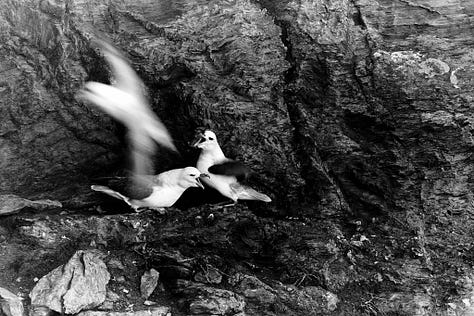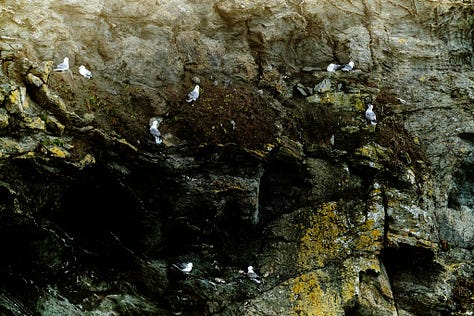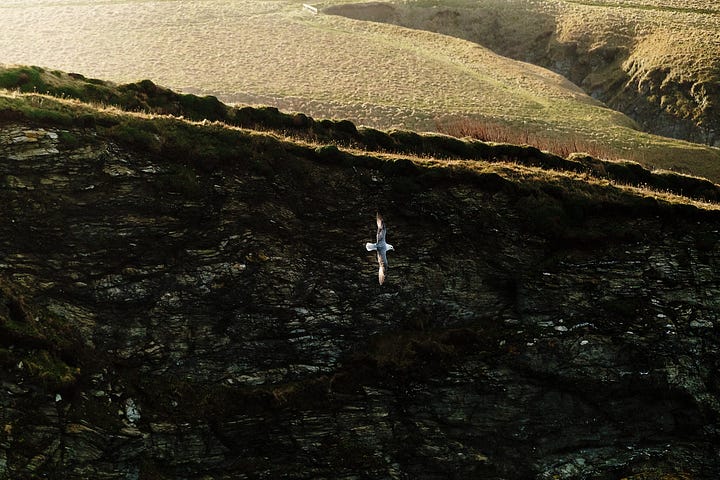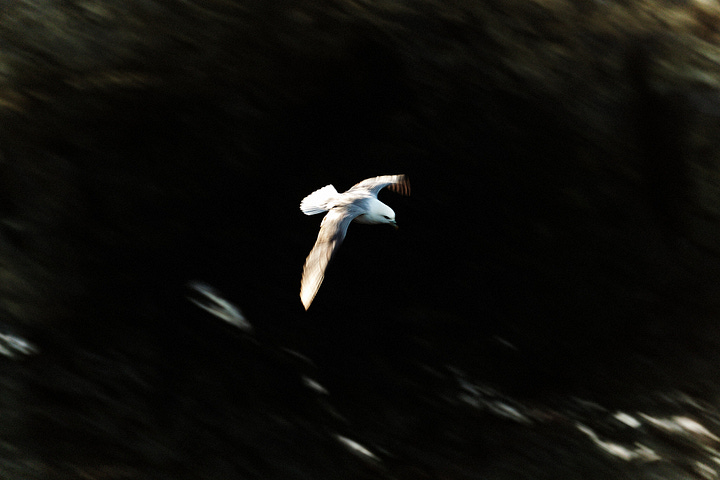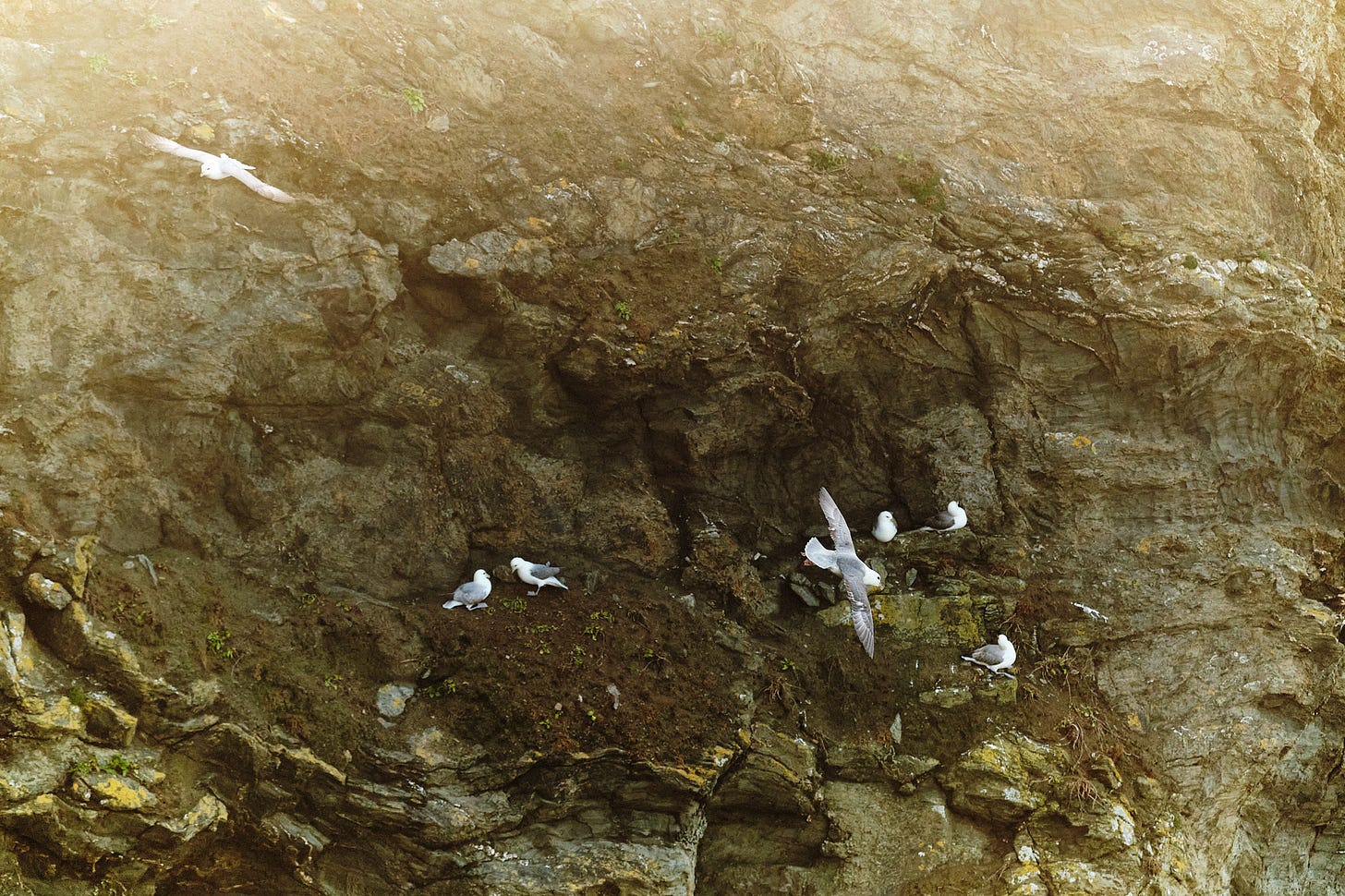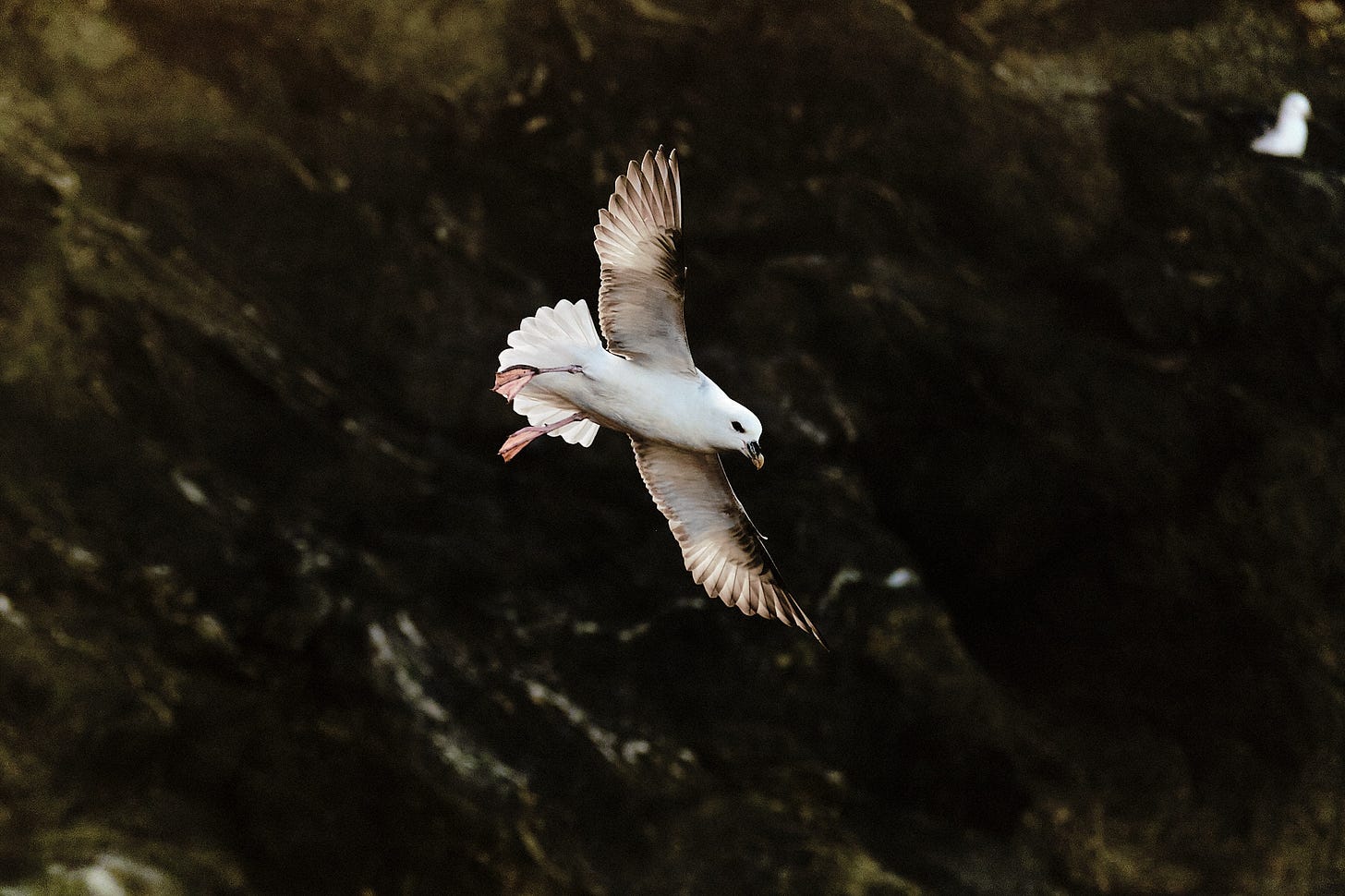
The Cornish coastline is very wiggly, and not far from my home lies one of my favourite wiggles. Cliffs are generally hard to look at directly. You’re either on top of the cliff looking down at the sea, or you’re in a boat looking back at the cliff. However, this particular cliff changes direction so acutely that it pretty much looks back on itself. Not only that, a huge bowl has been carved out of the rock to create what can only really be described as a giant throne. You could probably sit 10 mates in there comfortably. I still cant figure out if the throne is the work of humans or storms. It’s tucked out of the wind on all sides pretty much, making it the perfect viewing platform for one of my favourite ever birds, the Fulmar.
My dad was an avid bird watcher, I’m an avid bird watcher, it’s the way it is. And when I was little, my dad and his bird watching mates taught me a very important lesson. “Theres no such thing as a seagull” they’d say. And they’re right. If you look through a bird book, you’ll find Black-Headed Gulls, Common Gulls and Greater Black-Backed Gulls but no Seagulls. ‘Sea Gull’ has become a generic term for all Gull species.
Despite their similarity, the bird I went to hang out with today is absolutely not a Sea Gull. You wont find them in seaside towns stealing chips and pasty ends and you wont see them flocking landfill sites off the M4. They’re specifically a cliff and open ocean dwelling organism and theyre much more comparable to the Albatross than the Gull. If you can’t picture an Albatross then I’d encourage you to look them up, they’re beautiful. The Wandering Albatross has the largest wingspan of any bird on Earth and they can migrate up to 120,000 kilometers in a year. However, they really a Southern Hemisphere creature. Occasionally they’re sighted in the Northern Hemisphere but when they are, they’re considered to have been kinda ‘blown off course’ so to speak. So I like to think of the Fulmar as our own little Northern Hemisphere Albatross. When you watch them fly you’ll be able to see the thing that sets them apart from other Gull species. They have incredibly stiff wings which, unlike Gulls, hinge more at the shoulder than the elbow when they flap. This allows them to efficiently glide over the ocean’s surface for really long periods of time whilst using minimum effort. Just like Albatrosses, they’ve also got a little bump on their beak which looks like nostrils. Fulmars are ocean going birds and while they’re feeding, they also ingest loads of saltwater. This bump on their beak is a gland that allows them to excrete excess salt after feeding.
They’re fantastic to watch because of how playful they are when they fly. They all sit on their respective ledges, until one of them flys off and does some loops. Then, one by one, they all start joining in. Suddenly, hardly any of them are on the cliff anymore and they’re all whipping around in the updrafts having a great time. Then, they then all reset on the cliff for a few minutes until one feels like playing and the cycle continues.
If you’re walking along the west coast of the UK encourage you look out for them.
Also I saw a stoat this morning. Great success.
